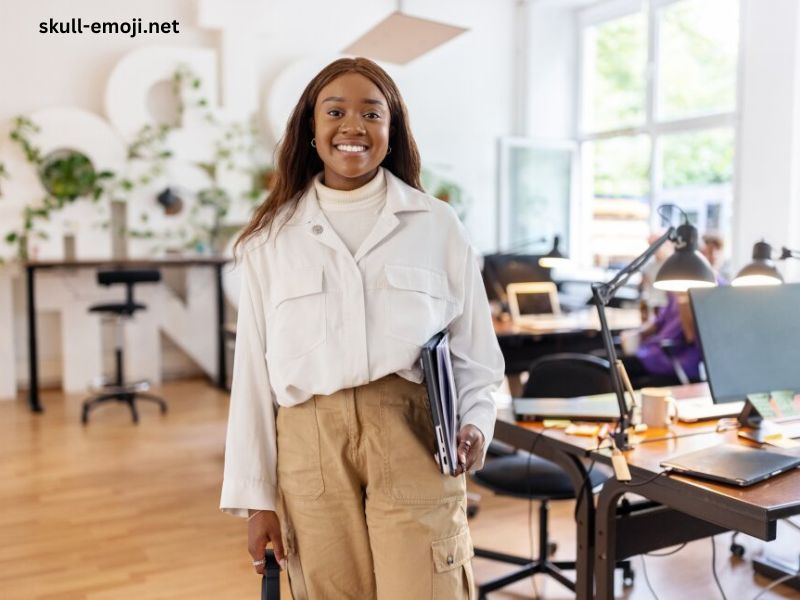Business casual attire for women is a dress code often embraced in workplaces that seek a balance between professional appearance and comfort. Unlike formal business attire, which typically requires suits, business casual allows for more flexibility and personal expression while still maintaining a polished, professional look. However, understanding what constitutes business casual can be challenging, as it often varies depending on the industry, company culture, and even regional norms. This article will explore the essentials of business casual for women, including key pieces, do’s and don’ts, and tips for adapting the dress code to different settings.
Understanding Business Casual
Business casual is a middle ground between formal business wear and casual everyday clothing. For women, it generally means wearing professional-looking clothing that isn’t as rigid or formal as a business suit but still appropriate for an office setting. The goal is to appear well-groomed and professional without being overly dressed.
While the specifics of what is considered business casual can differ from one workplace to another, there are some general guidelines that can help women navigate this dress code.
Key Pieces of Business Casual Attire for Women
Certain clothing items form the backbone of a business casual wardrobe. These pieces are versatile, easy to mix and match, and suitable for most office environments.
a. Blouses and Tops
Blouses, button-down shirts, and tailored tops are staples of business casual attire. Neutral colors like white, black, beige, and navy are always safe choices, but soft pastels and subtle prints can also work well. Avoid tops with overly bold patterns or graphics, as these can be too casual for a professional setting. Sleeveless tops can be appropriate if they are paired with a blazer or cardigan, but it’s essential to ensure that the top is not too revealing.
b. Blazers and Jackets
A well-fitted blazer can instantly elevate any outfit to a more professional level. Blazers in neutral colors are versatile and can be paired with various tops and bottoms. While traditional tailored blazers are always a good choice, more relaxed options like unstructured blazers or lightweight jackets can also be appropriate, depending on the work environment.
c. Pants and Skirts
Tailored pants, such as slacks or ankle-length trousers, are essential for a business casual wardrobe. These should be well-fitted but not too tight, and the hem should be appropriate for the type of shoes you are wearing. Cropped pants or capris can be suitable in more casual offices, but avoid jeans unless explicitly allowed.
Skirts should generally be knee-length or slightly below. Pencil skirts are a classic option, but A-line skirts and other modest cuts are also acceptable. The key is to avoid skirts that are too short or too tight.
d. Dresses
Dresses can be a great option for business casual attire, especially during warmer months. A sheath dress, wrap dress, or a fit-and-flare style in a conservative length is usually appropriate. As with skirts, the dress should not be too short or revealing. Layering a dress with a cardigan or blazer can also make it more suitable for the office.
e. Sweaters and Cardigans
Sweaters and cardigans provide both comfort and style, making them perfect for a business casual environment. Lightweight knits in solid colors or subtle patterns can be worn over blouses or dresses. Avoid oversized or overly casual sweaters, like those with large logos or excessively chunky knits.
f. Footwear
Shoes are a crucial element of business casual attire. Closed-toe shoes are typically the most appropriate, with options like loafers, ballet flats, low-heeled pumps, and ankle boots being popular choices. Sandals can be suitable in some workplaces, but it’s important to choose styles that are more refined and not too casual. High heels are acceptable but should be moderate in height and comfortable enough for all-day wear.
g. Accessories
Accessories can add a personal touch to your business casual outfit, but they should be chosen carefully. Simple jewelry, such as stud earrings, a delicate necklace, or a classic watch, is usually best. Handbags should be structured and professional, rather than casual or overly trendy. Belts, scarves, and other accessories can add interest to an outfit, but should not be too flashy or distracting.
Do’s and Don’ts of Business Casual for Women
While business casual allows for more flexibility, there are still some general guidelines to follow to ensure your outfit remains appropriate for the workplace.
Do:
- Choose Fabrics Wisely: Opt for high-quality fabrics like cotton, wool, silk, or blends that hold their shape and look polished. Avoid overly casual fabrics like denim (unless permitted), jersey, or anything with too much stretch.
- Prioritize Fit: Ensure that your clothing fits well. This means avoiding anything too tight or too loose. Tailoring can make a significant difference in how professional your outfit looks.
- Keep It Modest: While business casual is less formal, it’s still important to maintain modesty. Avoid tops that are too low-cut, skirts that are too short, or anything too sheer.
- Pay Attention to Grooming: Even with a more relaxed dress code, grooming remains important. Hair should be clean and styled, nails should be well-kept, and makeup, if worn, should be understated and professional.
Don’t:
- Wear Athleisure: Leggings, yoga pants, and other athletic wear are generally too casual for a business casual setting, even when paired with more formal pieces.
- Opt for Casual T-Shirts: Basic t-shirts, especially those with logos or graphics, are too informal for most business casual environments.
- Overdo Accessories: Keep accessories minimal and professional. Avoid large, flashy jewelry or accessories that could be distracting.
- Ignore Company Culture: Different workplaces have different interpretations of business casual. Always take your company’s specific culture into account when choosing your outfit.
Adapting Business Casual to Different Settings
Business casual attire can vary significantly depending on the industry, company culture, and even the geographical location of the workplace. Here’s how to adapt your business casual wardrobe to different settings.
a. Industry Differences
In more traditional industries like finance, law, or government, business casual tends to lean more toward the formal side. In these environments, you might stick to tailored pants, conservative skirts, blouses, and blazers, with minimal accessories.
On the other hand, in creative industries like advertising, tech, or media, there might be more leeway to express personal style within the business casual framework. Here, you can experiment with more color, patterns, and trendier pieces, as long as they remain polished and professional.
b. Company Culture
The specific culture of your company plays a significant role in determining what is acceptable as business casual. Some companies may have a more relaxed approach, allowing for jeans, casual dresses, or even sneakers, while others might expect a more traditional interpretation of the dress code.
When starting at a new job or if you’re unsure about the dress code, it’s a good idea to observe what your colleagues are wearing or consult the employee handbook. When in doubt, it’s always safer to start with a more conservative outfit and adjust based on what you see others wearing.
c. Regional Variations
Regional differences can also impact what is considered appropriate business casual attire. In some cities, like New York or Washington D.C., the overall work culture might be more formal, with business casual leaning closer to business professional. In contrast, cities like San Francisco or Austin might have a more laid-back approach, even in professional settings.
Weather can also influence business casual choices. In warmer climates, lighter fabrics and short-sleeved blouses might be more acceptable, while in colder regions, layers like sweaters, blazers, and scarves become more common.
d. Special Occasions
Certain occasions may require you to adjust your business casual attire. For example, if you have a meeting with clients or higher-ups, it’s advisable to dress on the more formal side of business casual. On casual Fridays, you might have more freedom to wear jeans or other relaxed pieces, but they should still be neat and professional.
Building a Versatile Business Casual Wardrobe
Building a business casual wardrobe that is versatile, comfortable, and professional doesn’t require a vast closet. By focusing on quality over quantity, you can create a capsule wardrobe with key pieces that mix and match easily.
Start by investing in a few high-quality basics, such as well-fitted trousers, skirts, blouses, and a blazer. These can form the foundation of your wardrobe. Then, add in a few statement pieces or accessories that reflect your personal style and can be mixed into your outfits to keep them fresh and interesting.
Over time, you can expand your wardrobe with additional items like dresses, cardigans, and different styles of shoes. The goal is to create a collection of clothing that allows you to dress appropriately for any situation while still feeling comfortable and confident.
Conclusion
Business casual for women is about finding the right balance between professionalism and comfort. By understanding the key pieces, following general guidelines, and adapting your wardrobe to suit your industry, company culture, and personal style, you can create outfits that are both appropriate and stylish for the workplace. The flexibility of business casual attire allows women to express themselves while still maintaining a polished and professional appearance, making it a popular choice in many modern workplaces.



